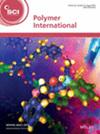Asti Sawitri, Halida Rahmi Luthfianti, Dian Ahmad Hapidin, Dhewa Edikresnha, Pramudita Satria Palar, Neni Surtiyeni, Arie Wibowo, Khairurrijal Khairurrijal
求助PDF
{"title":"Synthesis and characterization of novel electrospun nanofibers based on taro starch: influence of solvent and isolation agent on morphology and diameter","authors":"Asti Sawitri, Halida Rahmi Luthfianti, Dian Ahmad Hapidin, Dhewa Edikresnha, Pramudita Satria Palar, Neni Surtiyeni, Arie Wibowo, Khairurrijal Khairurrijal","doi":"10.1002/pi.6709","DOIUrl":null,"url":null,"abstract":"<p>The utilization of natural polymers in producing electrospun nanofibers has received significant attention due to their biocompatibility, sustainability and diverse range of applications. This research focuses on synthesizing electrospun nanofibers derived from taro starch isolated from tubers. The investigation utilized SEM to examine the structure and size of the electrospun nanofibers. Formic acid and dimethyl sulfoxide solvents were tested to determine the most efficient solvent system for synthesizing taro starch nanofibers. The results demonstrated that the taro starch nanofibers can be effectively synthesized when using formic acid as the primary solvent. The study also investigated the impact of altering the volumetric ratio of formic acid to water on nanofiber morphology and size, finding that a lower formic acid fraction produced smooth fibers while a higher fraction resulted in fused fibers. The electrospinnability was further evaluated by comparing the effects of different isolation agents—distilled water and sodium metabisulfite—during the isolation process. The isolation agent significantly affected the fiber diameter, with notable differences observed in the smoothness of taro starch nanofibers at starch solution concentrations of 13, 15 and 17 wt%. Overall, the results of the study showed that the formation of taro starch fibers was influenced by the type of solvent, the volume fraction of the solvent to water, and the starch isolation agent. Successful fabrication of nanofibers from taro starch and its optimization parameters can contribute to the development of environmentally friendly nanofiber materials and offer a variety of applications in biomedicine, food and environmental engineering, such as tissue engineering, wound dressing, drug delivery, functional food delivery and food packaging. © 2024 Society of Chemical Industry.</p>","PeriodicalId":20404,"journal":{"name":"Polymer International","volume":"74 3","pages":"217-230"},"PeriodicalIF":3.6000,"publicationDate":"2024-10-28","publicationTypes":"Journal Article","fieldsOfStudy":null,"isOpenAccess":false,"openAccessPdf":"","citationCount":"0","resultStr":null,"platform":"Semanticscholar","paperid":null,"PeriodicalName":"Polymer International","FirstCategoryId":"92","ListUrlMain":"https://scijournals.onlinelibrary.wiley.com/doi/10.1002/pi.6709","RegionNum":4,"RegionCategory":"化学","ArticlePicture":[],"TitleCN":null,"AbstractTextCN":null,"PMCID":null,"EPubDate":"","PubModel":"","JCR":"Q2","JCRName":"POLYMER SCIENCE","Score":null,"Total":0}
引用次数: 0
引用
批量引用
Abstract
The utilization of natural polymers in producing electrospun nanofibers has received significant attention due to their biocompatibility, sustainability and diverse range of applications. This research focuses on synthesizing electrospun nanofibers derived from taro starch isolated from tubers. The investigation utilized SEM to examine the structure and size of the electrospun nanofibers. Formic acid and dimethyl sulfoxide solvents were tested to determine the most efficient solvent system for synthesizing taro starch nanofibers. The results demonstrated that the taro starch nanofibers can be effectively synthesized when using formic acid as the primary solvent. The study also investigated the impact of altering the volumetric ratio of formic acid to water on nanofiber morphology and size, finding that a lower formic acid fraction produced smooth fibers while a higher fraction resulted in fused fibers. The electrospinnability was further evaluated by comparing the effects of different isolation agents—distilled water and sodium metabisulfite—during the isolation process. The isolation agent significantly affected the fiber diameter, with notable differences observed in the smoothness of taro starch nanofibers at starch solution concentrations of 13, 15 and 17 wt%. Overall, the results of the study showed that the formation of taro starch fibers was influenced by the type of solvent, the volume fraction of the solvent to water, and the starch isolation agent. Successful fabrication of nanofibers from taro starch and its optimization parameters can contribute to the development of environmentally friendly nanofiber materials and offer a variety of applications in biomedicine, food and environmental engineering, such as tissue engineering, wound dressing, drug delivery, functional food delivery and food packaging. © 2024 Society of Chemical Industry.
基于芋头淀粉的新型电纺纳米纤维的合成与表征:溶剂和分离剂对形态和直径的影响
利用天然高分子材料制备静电纺纳米纤维因其生物相容性、可持续性和广泛的应用前景而备受关注。本文主要研究了从芋头块茎中分离的淀粉制备电纺丝纳米纤维。利用扫描电镜对静电纺纳米纤维的结构和尺寸进行了表征。以甲酸和二甲亚砜为溶剂,确定了合成芋头淀粉纳米纤维的最佳溶剂体系。结果表明,以甲酸为主要溶剂,可以有效地合成芋淀粉纳米纤维。该研究还研究了改变甲酸与水的体积比对纳米纤维形态和尺寸的影响,发现较低的甲酸含量会产生光滑的纤维,而较高的甲酸含量会产生熔融纤维。通过比较不同分离剂蒸馏水和焦亚硫酸钠在分离过程中的作用,进一步评价了电可纺性。分离剂对纤维直径有显著影响,在淀粉溶液浓度为13%、15%和17%时,芋头淀粉纳米纤维的光滑度有显著差异。总体而言,研究结果表明,溶剂类型、溶剂与水的体积分数和淀粉隔离剂对芋头淀粉纤维的形成有影响。芋头淀粉纳米纤维的成功制备及其参数的优化,将为环境友好型纳米纤维材料的发展做出贡献,并在组织工程、伤口敷料、药物输送、功能食品输送和食品包装等生物医学、食品和环境工程领域提供广泛的应用。©2024化学工业学会。
本文章由计算机程序翻译,如有差异,请以英文原文为准。




 求助内容:
求助内容: 应助结果提醒方式:
应助结果提醒方式:


